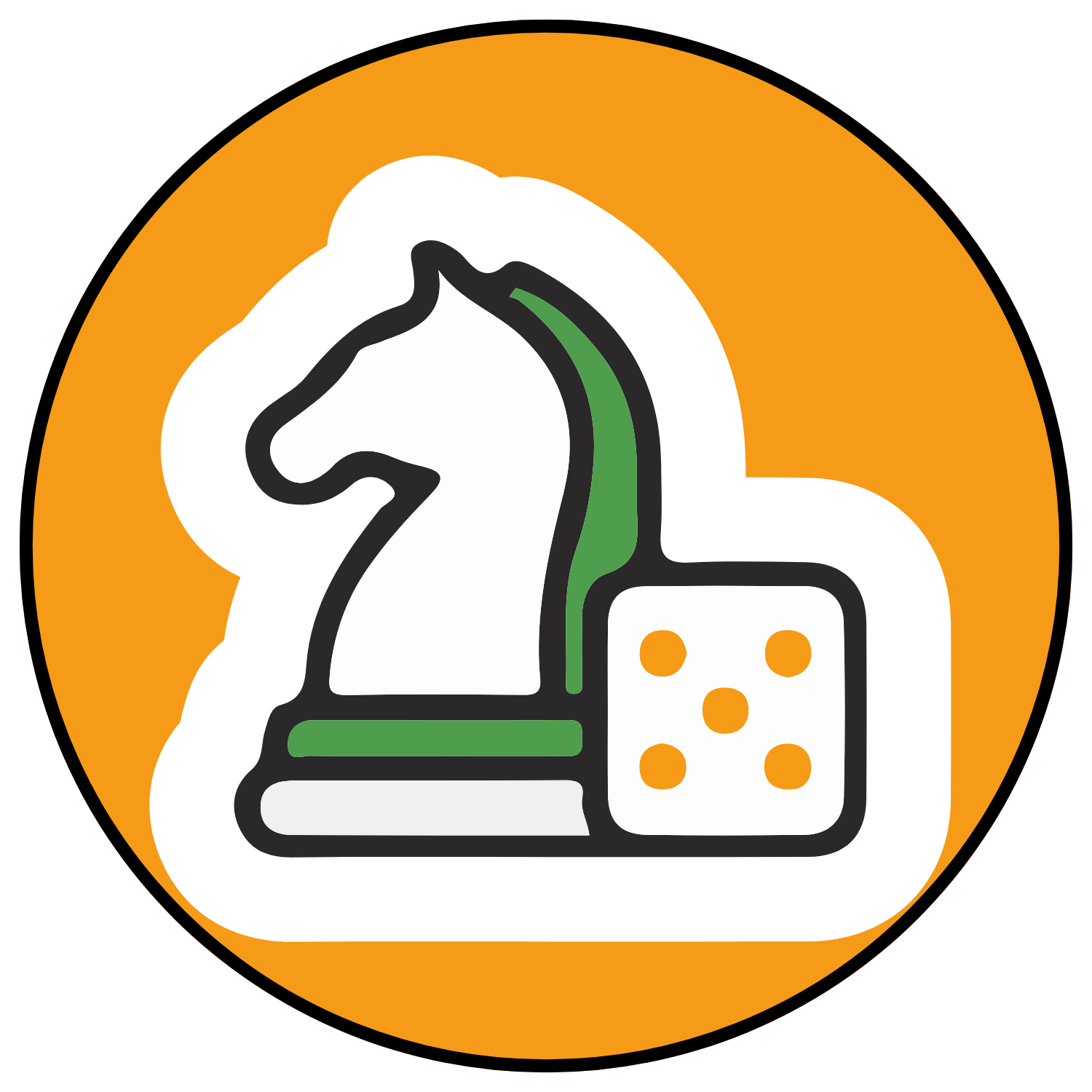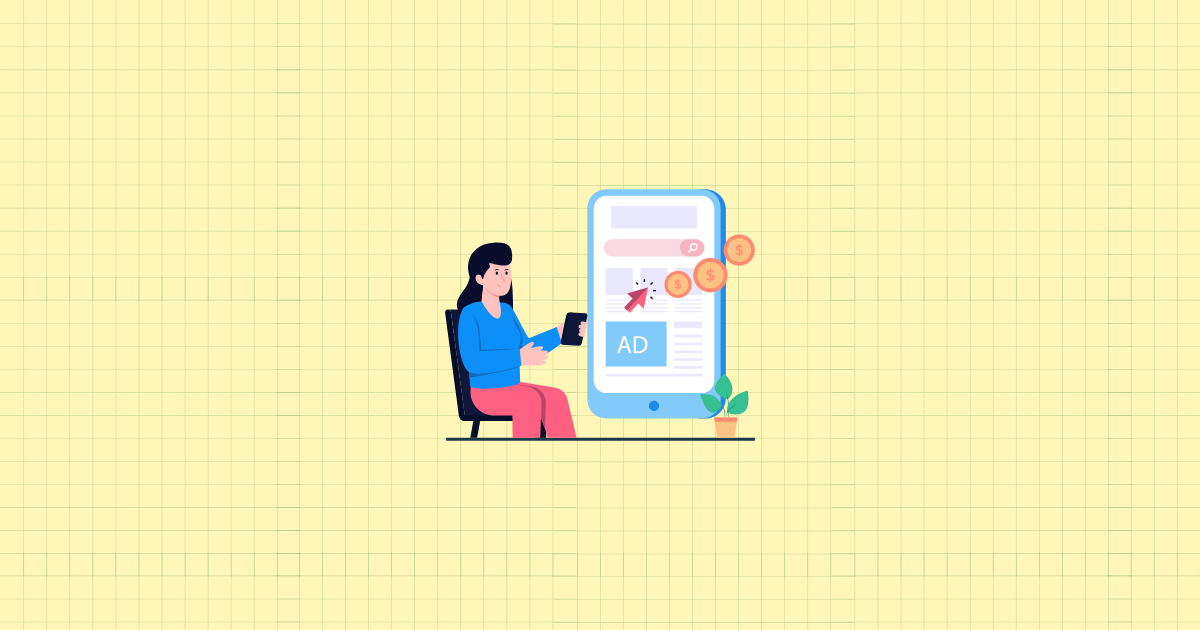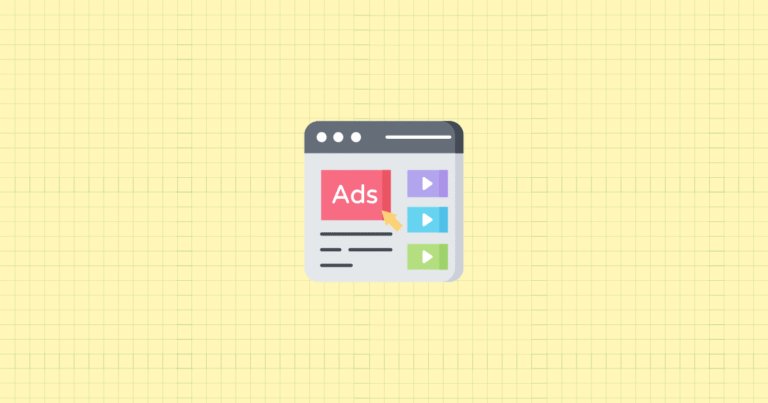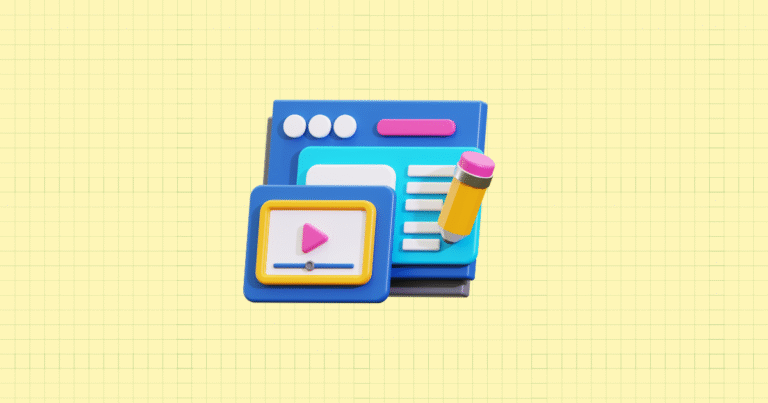Picture this: Your Shopify store has amazing products, but they’re sitting there like hidden treasures waiting to be discovered. Meanwhile, millions of potential customers are scrolling through YouTube every single day, watching videos, getting inspired, and making purchase decisions. The gap between your products and those eager buyers? A well-crafted YouTube advertising strategy.
You’re about to discover how YouTube advertising can transform your Shopify store from another face in the crowd to a conversion powerhouse. But here’s the thing—most Shopify store owners approach YouTube ads completely wrong. They think it’s just about throwing money at the platform and hoping for the best.
We’re going to change that. By the end of this guide, you’ll understand exactly how to create YouTube ad campaigns that don’t just generate views, but drive real sales to your Shopify store. You’ll learn which ad formats work best for e-commerce, how to create videos that convert skeptical viewers into loyal customers, and how to measure success in ways that actually matter to your bottom line.
Understanding YouTube’s E-commerce Power
YouTube isn’t just another social media platform—it’s become the world’s second-largest search engine and a critical part of the modern shopping journey. The numbers tell a compelling story. With over 20 million daily active users and more than 2 million videos uploaded every day, YouTube has positioned itself as the fourth-most valuable social media tool for marketers.
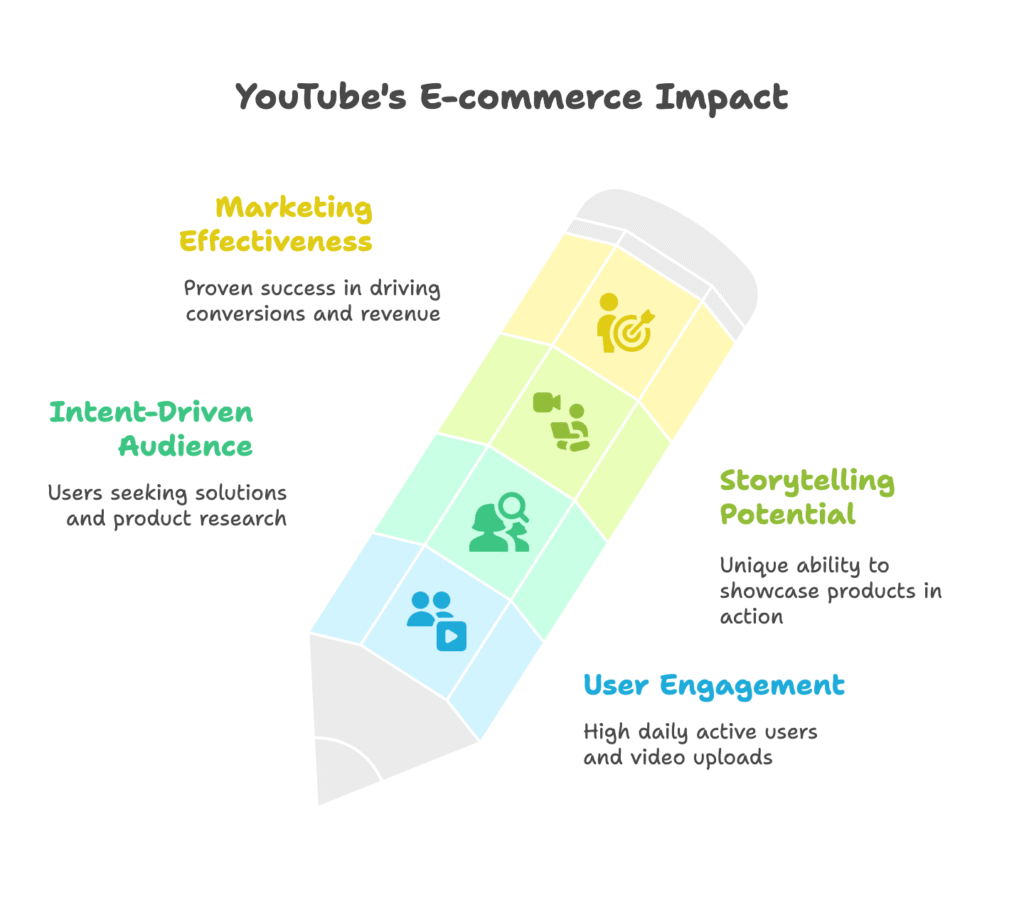
But here’s where it gets interesting for Shopify store owners. Unlike other platforms where people go to socialize, YouTube users come with intent. They’re searching for solutions, researching products, and watching demonstrations. When someone watches a product video on YouTube, they’re already in the consideration phase of their buying journey.
Consider the story of LSTN Sound Co., a social entrepreneurship company that donates hearing aids from their sales proceeds. They discovered that inspiration from viral YouTube content could be converted into a powerful marketing tool. The result? YouTube became their most powerful marketing channel, driving significant conversion and revenue improvements.
This transformation didn’t happen by accident. It happened because they understood something crucial: YouTube allows you to tell your product’s story in ways that static images and text simply can’t match. When customers can see your product in action, hear the benefits explained clearly, and connect emotionally with your brand, the path to purchase becomes much shorter.
YouTube Ad Formats That Actually Work for Shopify
Not all YouTube ad formats are created equal, especially when you’re trying to drive sales to your Shopify store. Each format serves a different purpose, and understanding these differences can make or break your campaign success.
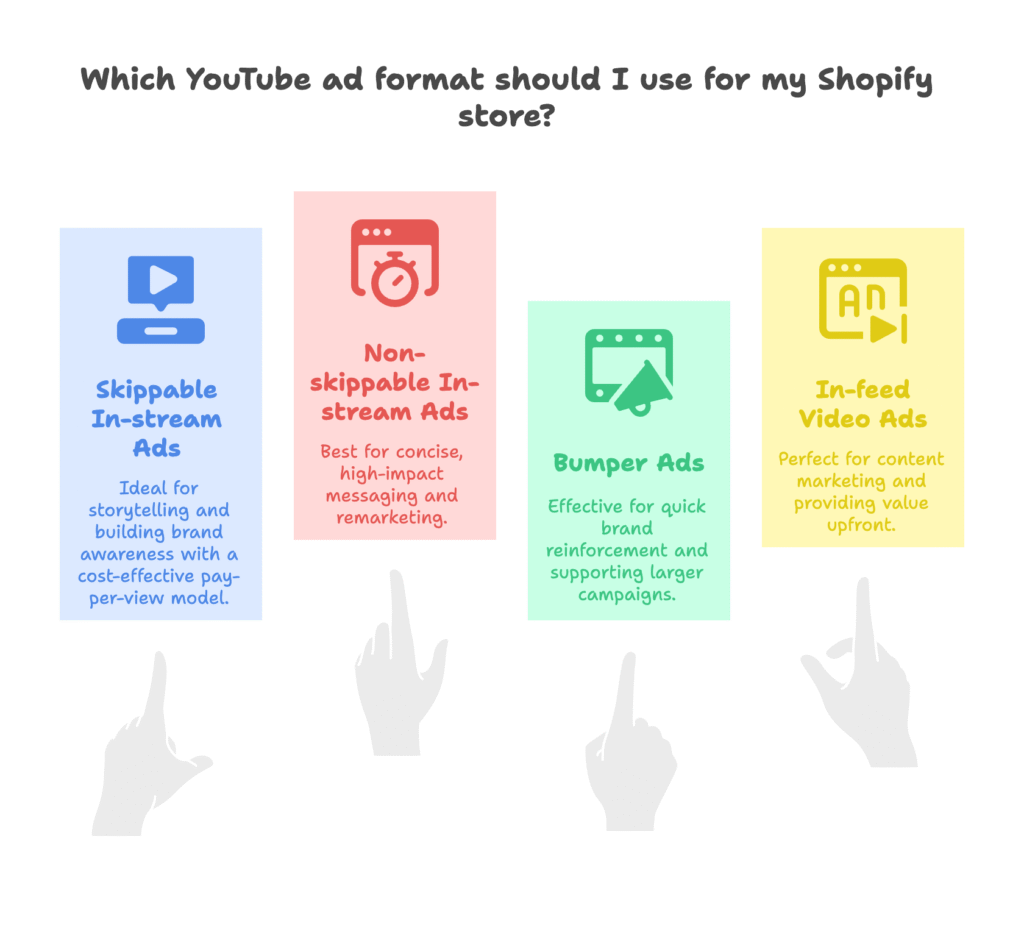
Skippable In-stream Video Ads: Your Storytelling Powerhouse
These ads play before, during, or after videos, and viewers can skip them after 5 seconds. That might sound like a disadvantage, but it’s actually a gift. Why? Because you only pay when someone watches for 30 seconds or more, or interacts with your ad.
For Shopify stores, skippable in-stream ads are perfect for new product launches, seasonal promotions, or building brand awareness. The minimum 12-second length gives you enough time to tell a compelling story, showcase your product’s benefits, and include a strong call-to-action.
The key to success with these ads lies in those critical first 5 seconds. If you can’t hook your viewer in that tiny window, they’re gone. But if you can, you’ve got their attention and they’ve just demonstrated genuine interest by choosing not to skip.
Non-skippable In-stream Video Ads: Your Precision Strike
Limited to 15 seconds and impossible to skip, these ads demand perfection. Every second counts. You’re paying based on impressions (CPM model), so you want to make sure every view delivers maximum impact.
For Shopify stores, non-skippable ads work brilliantly for concise, high-impact messaging. Think limited-time offers, flash sales, or remarketing to people who have already shown interest in your products. The constraint of 15 seconds forces you to distill your message to its essence—and that’s often exactly what busy shoppers need.
Bumper Ads: Your Brand-Building Bullets
Six seconds. Non-skippable. That’s all you get with bumper ads. But don’t underestimate their power—90% of bumper ads create significant lift in ad recall. These bite-sized ads excel at brand awareness campaigns, supporting larger campaign narratives, or making quick promotional announcements.
For Shopify stores, bumper ads work best when you’re already running larger campaigns and want to reinforce your message. They’re like the perfect punctuation mark to your broader advertising story.
In-feed Video Ads: Your Content Marketing Secret Weapon
Formerly known as Discovery ads, these appear in YouTube search results, suggested videos, and the homepage. They look similar to organic content, which means lower viewer resistance and higher engagement potential.
This format is golden for Shopify stores that want to take a content marketing approach. Educational content, how-to videos, and product demonstrations perform exceptionally well as in-feed ads because they provide value upfront rather than feeling immediately salesy.
Setting Up Your YouTube-Shopify Success Foundation
Before you can create ads that sell, you need to lay the groundwork properly. This isn’t the exciting part, but getting it wrong will sabotage everything that comes after.
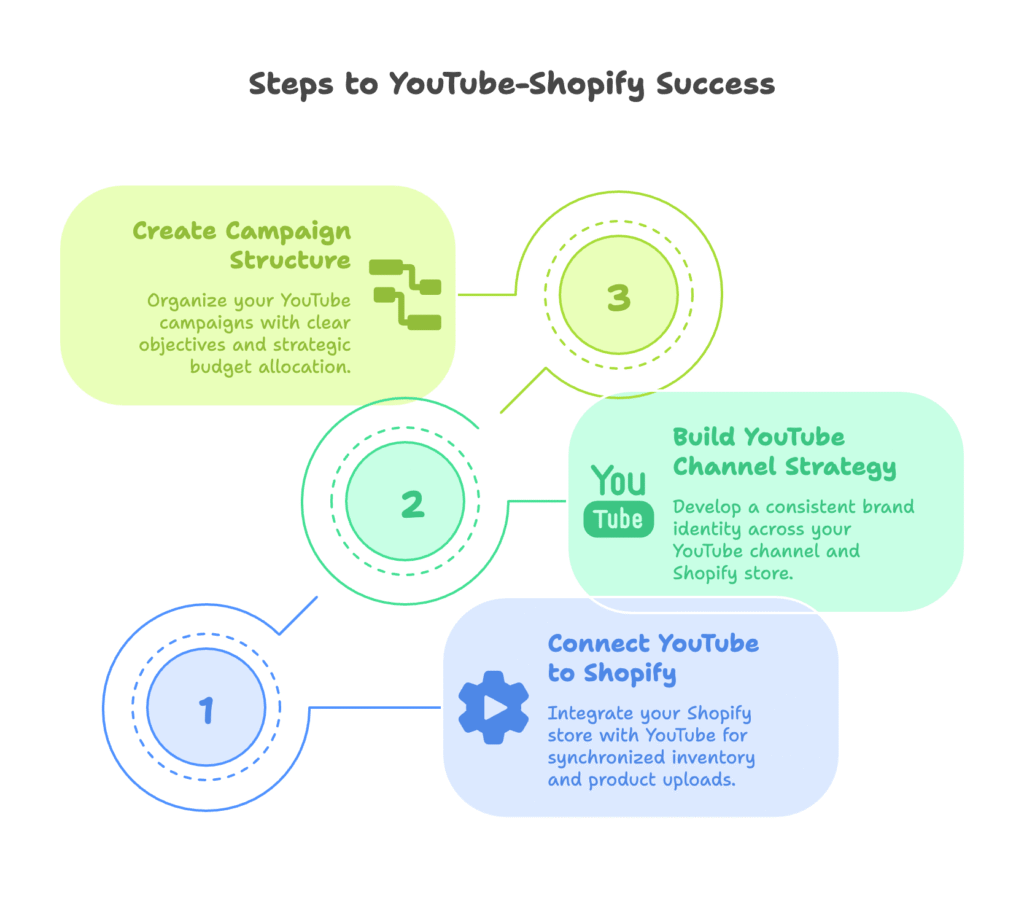
Connecting YouTube to Your Shopify Store
The first step is installing the Google & YouTube app from the Shopify App Store. This isn’t just another integration—it’s your gateway to synchronized inventory, automatic product catalog uploads to Google Merchant Center, and shoppable video features.
During setup, pay close attention to the permission requirements. The app needs access to your product catalog, customer data, and sales information to optimize your campaigns effectively. Don’t rush through these steps. A properly configured integration will save you countless headaches later.
Once connected, your products automatically sync to Google Merchant Center. This means your YouTube ads can display current pricing, availability, and product details without you having to manually update anything.
Building Your YouTube Channel Strategy
Here’s where many Shopify store owners make their first mistake—they treat their YouTube channel like an afterthought. Your channel is often the first impression potential customers have of your brand. Make it count.
Brand consistency matters more than you might think. Research shows customers need 5-7 consistent brand impressions before making a purchase decision. Your YouTube channel should seamlessly align with your Shopify store’s visual identity—same logo, color palette, and design elements.
Channel customization goes beyond just uploading a profile picture. YouTube offers robust customization features for channel artwork, playlist organization, and content structure. Use these to create a cohesive brand experience that builds trust and familiarity.
Creating Your First Campaign Structure
Campaign structure might seem like technical busywork, but it’s actually strategic. How you organize your campaigns determines how well you can track performance, allocate budgets, and optimize results.
Start with clear campaign objectives. Are you driving brand awareness, increasing website traffic, or generating direct sales? Each objective requires different settings, targeting, and measurement approaches. Don’t try to achieve everything with one campaign—focused campaigns always outperform scattered approaches.
Budget allocation deserves special attention. Start conservative, test thoroughly, then scale what works. It’s tempting to launch with big budgets, but you’ll learn more and waste less money by starting small and scaling systematically.
Creating Videos That Convert Browsers into Buyers
Now we reach the heart of YouTube advertising success—the content itself. Your video can have perfect targeting, optimal budget allocation, and flawless technical setup, but if the content doesn’t resonate, nothing else matters.
Technical Excellence Without Breaking the Bank
Let’s address the elephant in the room—video production costs. Many Shopify store owners assume they need expensive equipment and professional crews to compete on YouTube. That’s simply not true.
YouTube accepts videos at 480×360 or 640×360 resolution in various formats including Quicktime, Windows Media, and AVI. Your files can be up to 1GB with a maximum frame rate of 30 FPS. These specifications are far from demanding by today’s standards.
For equipment, start with what you have. Modern smartphones shoot excellent video. Add a simple tripod for stability, consider a basic lighting setup (even natural window light works), and invest in decent audio equipment. Poor audio kills more videos than poor visuals ever will.
The decision between DIY and professional production should be based on budget, time, and desired quality. Start with DIY to learn what works, then invest in professional help when you’ve proven your concept and need to scale.
Content Types That Drive Shopify Sales
Product demonstrations remain the king of e-commerce video content. They answer the question every online shopper asks: “How does this actually work?” Show your product solving real problems, demonstrate its features in action, and address common customer questions before they arise.
Customer testimonials add social proof that no amount of marketing copy can match. Real customers sharing authentic experiences create trust. Before-and-after scenarios work particularly well for products that create visible transformations.
Educational content positions your brand as helpful rather than purely transactional. How-to guides, expert tips, and problem-solution frameworks attract customers who aren’t yet ready to buy but are researching solutions.
Lifestyle and aspirational content creates emotional connections. Show your products integrated into real life situations. Help customers envision themselves using your products. This emotional connection often proves more persuasive than any logical argument.
The Science of That Crucial First Five Seconds
Those first five seconds before viewers can skip your ad represent the most important real estate in digital advertising. You must hook viewers immediately, communicate clear value, and make them curious enough to keep watching.
Start with a question, problem, or surprising statement. Avoid slow builds or gradual introductions. Jump straight into the most compelling part of your message. Use visual elements that grab attention—movement, contrast, or unexpected imagery.
Your call-to-action shouldn’t wait until the end. Weave compelling action words throughout your video. Phrases like “discover how,” “learn the secret,” or “get instant access” create urgency and direction.
Advanced Targeting That Finds Your Perfect Customers
YouTube’s targeting capabilities can feel overwhelming, but they’re your secret weapon for finding people most likely to buy from your Shopify store. The trick isn’t using every available option—it’s using the right combinations strategically.
Audience Segmentation for the Customer Journey
Not everyone who watches your YouTube ads is at the same stage of the buying process. Someone discovering your brand for the first time needs different messaging than someone who abandoned their cart yesterday.
Awareness stage audiences need educational content that introduces your solution. They’re not ready to buy yet, so focus on building recognition and trust. Target broad interests related to your product category.
Consideration stage audiences are actively researching solutions. They’ll respond to comparison videos, detailed product demonstrations, and social proof. Target people who’ve visited your website but haven’t purchased.
Decision stage audiences just need that final push. They’ll convert with limited-time offers, testimonials, or guarantee explanations. Target your email subscribers, cart abandoners, and people who viewed specific product pages.
Custom Audiences That Actually Convert
Your existing customer data is YouTube advertising gold. Upload your Shopify customer lists to create custom audiences. These people already trust your brand—they just need to know about new products or be reminded about items they were considering.
Website visitor segments allow incredibly precise targeting. Create audiences based on specific page visits, time spent on site, or particular actions taken. Someone who spent 10 minutes on your product page shows much higher intent than someone who bounced after 5 seconds.
Lookalike audiences help you find new customers who share characteristics with your best existing customers. Upload your highest-value customer data, and YouTube will find similar users who are likely to be interested in your products.
Bidding Strategies That Maximize Your Budget
Bidding on YouTube ads requires strategic thinking, not just setting a number and hoping for the best. Your bidding strategy should align with your campaign goals and the customer journey stage you’re targeting.
Cost-per-view (CPV) bidding works well for awareness campaigns where you want maximum reach. You only pay when someone watches your ad for a meaningful duration, ensuring you’re paying for actual engagement.
Target return on ad spend (ROAS) bidding focuses on driving profitable conversions. Set your target ROAS based on your profit margins, and let YouTube optimize for viewers most likely to purchase at that value.
Start with manual bidding to understand your audience’s behavior, then transition to automated strategies once you have sufficient performance data. YouTube’s algorithms can optimize better than humans, but they need quality data to work with.
Measuring Success Beyond Vanity Metrics
Views and likes feel good, but they don’t pay the bills. For Shopify store owners, success means one thing—profitable sales growth. Let’s focus on metrics that actually matter to your bottom line.
Key Performance Indicators for Revenue Growth
View rate and watch time indicate content quality and audience engagement. If people aren’t watching your full ad, the content might not resonate or the targeting might be off. Aim for view rates above 15% and watch times that reach your key selling points.
Click-through rate (CTR) measures how compellingly your ad motivates action. Low CTRs often indicate weak calls-to-action or misaligned targeting. CTRs above 1% are typically considered good for YouTube ads.
But the metric that matters most is return on ad spend (ROAS). This tells you exactly how much revenue you generate for every dollar spent on ads. For most Shopify stores, a ROAS of 3:1 or higher indicates profitable campaigns.
Attribution and Analytics Integration
YouTube ads rarely work in isolation. Customers might see your ad, visit your website, leave, then return days later to purchase. Understanding this customer journey requires proper attribution modeling.
Google Analytics integration provides detailed insights into how YouTube traffic behaves on your Shopify store. Set up enhanced e-commerce tracking to see which products YouTube viewers purchase, their average order values, and their conversion paths.
Multi-channel funnel analysis reveals how YouTube ads work alongside your other marketing efforts. You might discover that YouTube ads are excellent at introducing new customers who later convert through email marketing or retargeting ads.
Testing and Optimization Frameworks
Successful YouTube advertising requires constant testing and refinement. Create systematic approaches to testing different elements—creative content, targeting options, bidding strategies, and campaign structures.
A/B testing methodology is crucial. Test one element at a time to isolate what drives improvement. Run tests for statistically significant periods—usually at least two weeks for YouTube campaigns to gather meaningful data.
Establish regular review schedules. Weekly reviews help you catch problems early. Monthly reviews allow deeper analysis of trends and performance patterns. Quarterly reviews should focus on strategic adjustments and scaling successful campaigns.
Integration with Your Complete Marketing Ecosystem
YouTube ads work best when they’re part of a coordinated marketing strategy, not isolated campaigns competing for attention with your other efforts.
Cross-Platform Synergies That Multiply Results
Content repurposing multiplies your video investment. Transform your YouTube ads into social media posts, email content, and website elements. Each platform might require different formats or lengths, but the core message remains consistent.
Email marketing integration creates powerful sequential messaging. Include YouTube videos in your email campaigns to increase engagement. Use email to promote your YouTube content and extend the reach of successful ad campaigns.
Your Shopify blog and YouTube channel should support each other. Embed YouTube videos in relevant blog posts to improve engagement and SEO. Create blog content that complements your video messages, diving deeper into topics introduced in your ads.
Advanced Tactics for Competitive Advantage
Influencer collaborations on YouTube can amplify your advertising efforts. Partner with creators whose audiences align with your target customers. But be selective—it’s better to work with smaller creators who have engaged audiences than large channels with passive followers.
Live shopping events combine the engagement of live video with immediate purchasing opportunities. Schedule regular live shopping sessions, promote them through your YouTube ads, and optimize the experience for maximum conversions.
Interactive video features like shoppable videos, cards, and optimized end screens can significantly boost conversion rates. These features allow viewers to purchase directly from your videos without leaving YouTube.
Scaling Success and Future-Proofing Your Strategy
Budget scaling requires careful attention to key performance indicators. Increase budgets gradually while monitoring ROAS and cost per acquisition. Rapid scaling often leads to decreased efficiency as you exhaust your best-performing audiences.
Stay ahead of emerging formats like YouTube Shorts advertising and interactive ad innovations. Early adoption of new formats often provides competitive advantages before they become saturated.
Prepare for platform developments by building strong first-party data strategies and embracing AI and automation opportunities. The future of YouTube advertising will be increasingly automated, but human strategy and creativity will remain crucial.
Your YouTube Advertising Implementation Roadmap
Success doesn’t happen overnight, but with systematic implementation, you can start seeing results quickly while building toward long-term growth.
First 30 Days: Building Your Foundation
Start with channel setup and basic content creation. You don’t need perfect videos—you need videos that test your concepts and help you understand your audience’s response. Launch your first campaign with a conservative budget to gather initial data.
Focus on learning during this period. Monitor metrics closely, but avoid making dramatic changes too quickly. YouTube’s algorithms need time to optimize, and hasty adjustments can disrupt this process.
60-90 Days: Optimization and Growth
Use the data from your first month to make informed optimizations. Refresh creative elements based on performance, refine targeting based on conversion data, and adjust budgets to favor successful campaigns.
This is when you should start seeing clearer patterns in what works for your specific products and audience. Double down on successful approaches while testing new variations.
Beyond 90 Days: Scaling and Innovation
Scale budgets for campaigns proving profitable at your target ROAS. Test new ad formats and advanced features. Develop more sophisticated integration strategies with your other marketing channels.
At this stage, YouTube advertising should become a predictable, profitable part of your Shopify store’s growth engine.
Overcoming Common Implementation Challenges
Budget constraints don’t have to prevent YouTube advertising success. Start with small daily budgets—even $10-20 per day can generate valuable insights. Focus on high-intent audiences initially to maximize conversion efficiency.
Content creation hurdles often stem from perfectionism. Your first videos don’t need to be masterpieces. They need to be helpful, honest, and aligned with your brand. Improve systematically based on performance data.
Technical implementation issues usually relate to tracking setup or integration problems. Take time to configure everything properly initially—it’s easier than fixing problems later. Document your setup process for future reference.
References
- Shopify. (2023). “YouTube Ads for Beginners: How To Advertise on Youtube.” Shopify Blog. https://www.shopify.com/blog/youtube-ads
- GetFlits. (2023). “8 YouTube Shopify Marketing Strategies To Boost Your Business.” GetFlits Blog. https://blog.getflits.com/youtube-shopify-marketing-strategies-to-boost-your-growth/
- Shopify. (2023). “YouTube Discovery Ads: How To Incorporate Into Your Strategy.” Shopify Blog. https://www.shopify.com/blog/discovery-ads-youtube
- Shopify. (2024). “The Ultimate Guide to YouTube Marketing (2025).” Shopify Blog. https://www.shopify.com/blog/youtube-marketing
- Google LLC. (2025). “Google & YouTube App.” Shopify App Store. https://apps.shopify.com/google
- Fırat, D. (2019). “YouTube advertising value and its effects on purchase intention.” Journal of Global Business Insights. https://digitalcommons.usf.edu/cgi/viewcontent.cgi?article=1097&context=globe
- Zenbundle. (2020). “White Paper: Enhancing Shopify Conversion Rates Through Shoppable Video and Targeted Advertising.” Zenbundle Success Stories. https://www.zenbundle.com/success-story/white-paper-enhancing-shopify-conversion-rates-through-shoppable-video-and-targeted-advertising
Ready to transform your Shopify store’s growth with strategically optimized YouTube advertising campaigns? While you’re mastering YouTube ads, don’t forget about optimizing your discount strategies. Growth Suite is a Shopify app that intelligently manages your discount codes, presenting perfectly timed offers to hesitant customers without devaluing your brand. Install Growth Suite with a single click and watch as it automatically optimizes your conversion rates while you focus on creating compelling YouTube content that drives traffic to your store!
